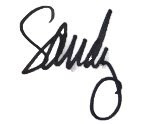 Today in my weird garden. Darn thing has now a pretty good display if you like plants from some other planet, hey, maybe I'll call this a 'plantnet'. The last section is all tied up with the bougainvilla and then straight up to the sky. The end does keep growing but thankfully it's slowed down to throw all it's energy into these less than magnificent flowers. The tree that it is nestled in, beyond the wall, suffered major damage from the last hurricane and we are trying to figure out what to replace it with and the landscape guy is on us to get it done. I want to wait until this plantnet if finished before we disturb anything else. Meanwhile if the tree goes over, so goes the domino set that I have unwittingly built.
Today in my weird garden. Darn thing has now a pretty good display if you like plants from some other planet, hey, maybe I'll call this a 'plantnet'. The last section is all tied up with the bougainvilla and then straight up to the sky. The end does keep growing but thankfully it's slowed down to throw all it's energy into these less than magnificent flowers. The tree that it is nestled in, beyond the wall, suffered major damage from the last hurricane and we are trying to figure out what to replace it with and the landscape guy is on us to get it done. I want to wait until this plantnet if finished before we disturb anything else. Meanwhile if the tree goes over, so goes the domino set that I have unwittingly built. Here's an example of a short statement of the sort that drive me nuts:
Remember, those reading your statement suffer from Short Attention Span, and if they are bored by your write-up they might not bother to go back and look again at your art. You want to bring 'em IN, not cut them out. Use the first person, 'I' statements, do not refer to yourself as 'The Artist' or by your last name, or in the third person. Avoid obscure references, and don't name-drop or compare yourself to well known artists. Go for specifics and explain in clear language. Don't go into long technique explanations but do mention your materials and methods in a general way.Interviewer: What motivates your work?
Artist: My deep fascination with the processes of change effected by time and nature’s gradual breaking down of form has developed into a profound meditation on loss and dissolution, restoration and restoral, and the interaction of mutability and permanence. I attempt to embody life’s processes of covering and discovering the possibilities of our interactions with the natural forces of time.
Sandy: Huh?
STATEMENT
I have always sewn and I have also always been an artist, but it wasn’t until I was long into adult life that I had one of those moments of synchronicity that made me realize I could combine both as my medium.
For my work, the fabric is generally the focus. I usually start with a piece that speaks to me and take off from there- the stories develop in my subconscious as I work, much like Tanguy’s ‘automatic writing’. In fact, when I finish a piece I rarely remember the process of making it but I do know the associations and the stories that give it meaning. I really don’t feel like I make these pieces, they simply come through me using my technique and craft to become whole.
My newer work has focused on exploring photography and collage techniques. These seem to be done as a result of a need to layer and add images on top of images. I have moved slightly away from traditional quiltmaking, but I just cannot give up that final split from working with layers and stitchery. I hope I never do.


2 comments :
Ask and you shall receive . . .
Having trained as a geographer, the work is about the landscape, always. It might at times appear to be unrelated, but the inspiration is there.
I live in a place that owes its existence to the industrial revolution and even now, just short of 200 years since the Pawtucket Falls were first seen as a source of industrial power, the hand of those early industrialists lies heavy on my city.
My windows are 22 stories above the foundations of a mill complex. From these windows I can see the river in all of its moods, track the movement of the sun and see the form of the land upon which this city was built.
There is never a time when I am not aware of the power of nature and the hand of man. forinfur
Oh dear. I don't think I've ever had to write something quite like that. Lately I've tried to keep statements about particular quilts in haiku form.
One day awhile ago a manager came up to me at work and asked me rather excitedly "Mary Beth, what inspires you?" Without pausing I replied "the sky." this of course was not exactly what she was hoping for, but what can you do? I've laughed about it ever since.
Post a Comment